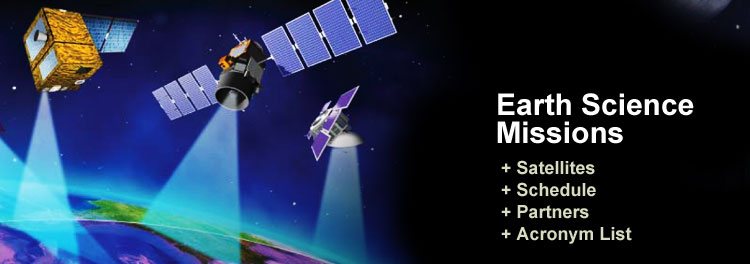   |
+ Visit NASA.gov + Visit Destination Earth + Contact NASA |

|
|
Missions Overview
From NASA's Earth-observing satellites, we can view the Earth as a whole system, observe the results of complex interactions, and begin to understand how the planet is changing. We use NASA's unique capabilities to understand and protect our home planet by using this view from space to study the Earth as an integrated system. The Earth Science Enterprise, working with its domestic and international partners, provides accurate, objective scientific data and analysis to advance our understanding of Earth system processes. Learning more about these processes will enable improved prediction capability for climate, weather, and natural hazards. By studying the Earth as a system and employing an end-to-end strategy to assure that all the information, understanding, and capabilities derived from its research are fully realized, NASA's Earth Science Enterprise is striving to develop a scientific understanding of the Earth System and it's response to natural or human-induced changes. The Nation now has a system of satellites with the ability to characterize the current state of the Earth system. In the years ahead, Earth-orbiting satellites will evolve into constellations of smart satellites that can be reconfigured based on the changing needs of science and technology. From there we envision an intelligent and integrated observation network composed of sensors deployed in vantage points from the subsurface to deep space. This "sensorweb" will provide on-demand data and analysis to a wide range of end users in a timely and cost-effective manner. This observation system will have many practical benefits for scientific research, national policymaking, and economic growth. For more information on Earth Science Missions...+ Satellites | Schedule | Partners | Acronym List
|
Home | ESE | Science | Missions | Technology | Applications | EducationAt a Glance...
Related Links...
|
 |
+ 2003 Earth Science Strategy (PDF 5MB) + NASA Privacy Statement, Disclaimer, + Glossary | Acronyms | FAQs |
 |
NASA Official: Sharron Sample Last Updated: July 27, 2004 + Contact NASA |
